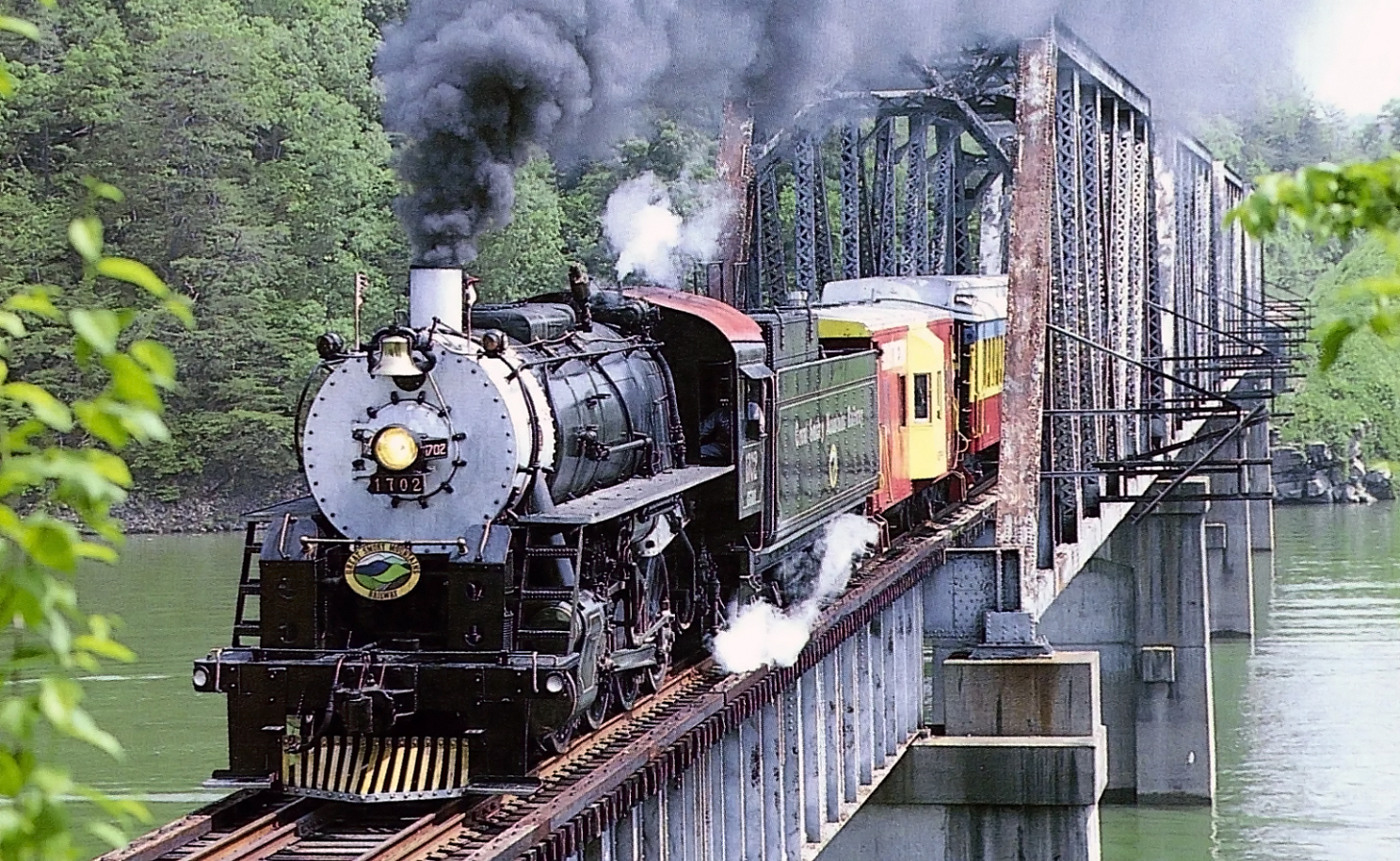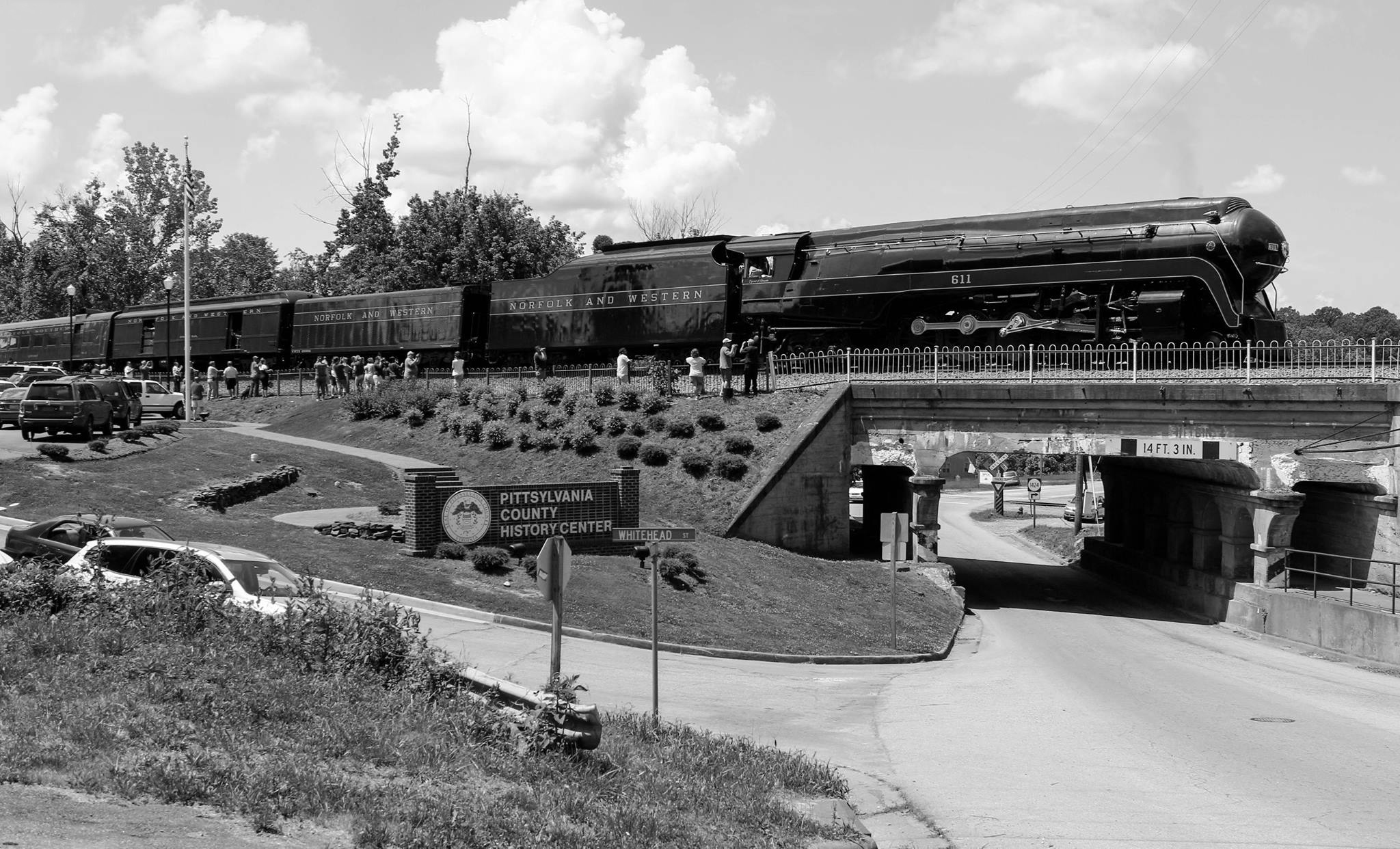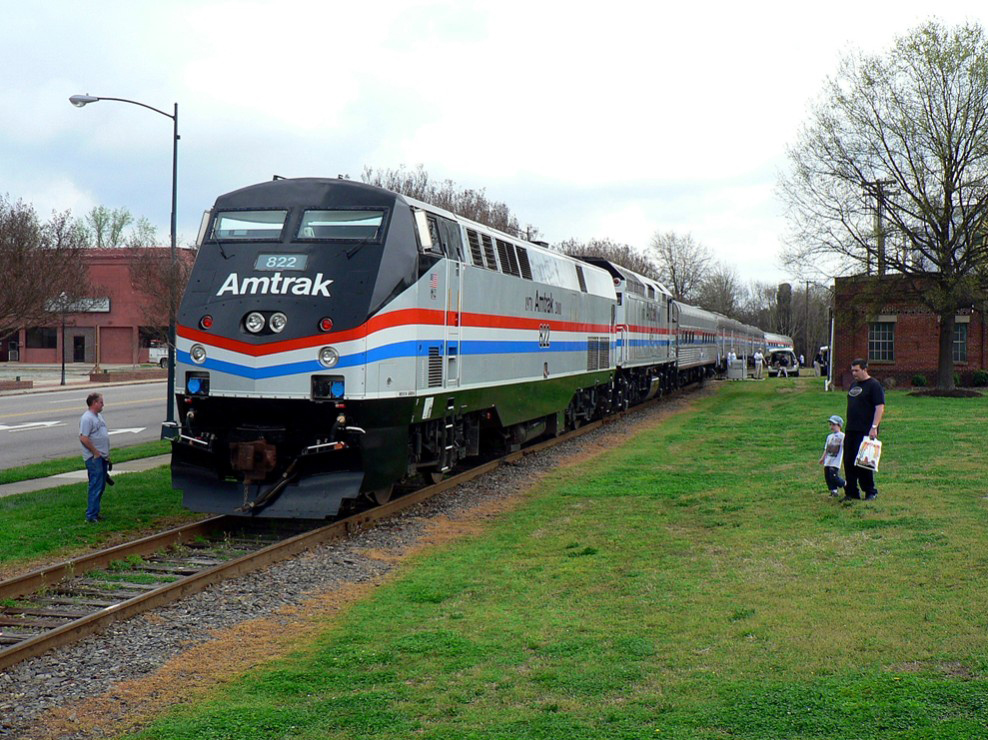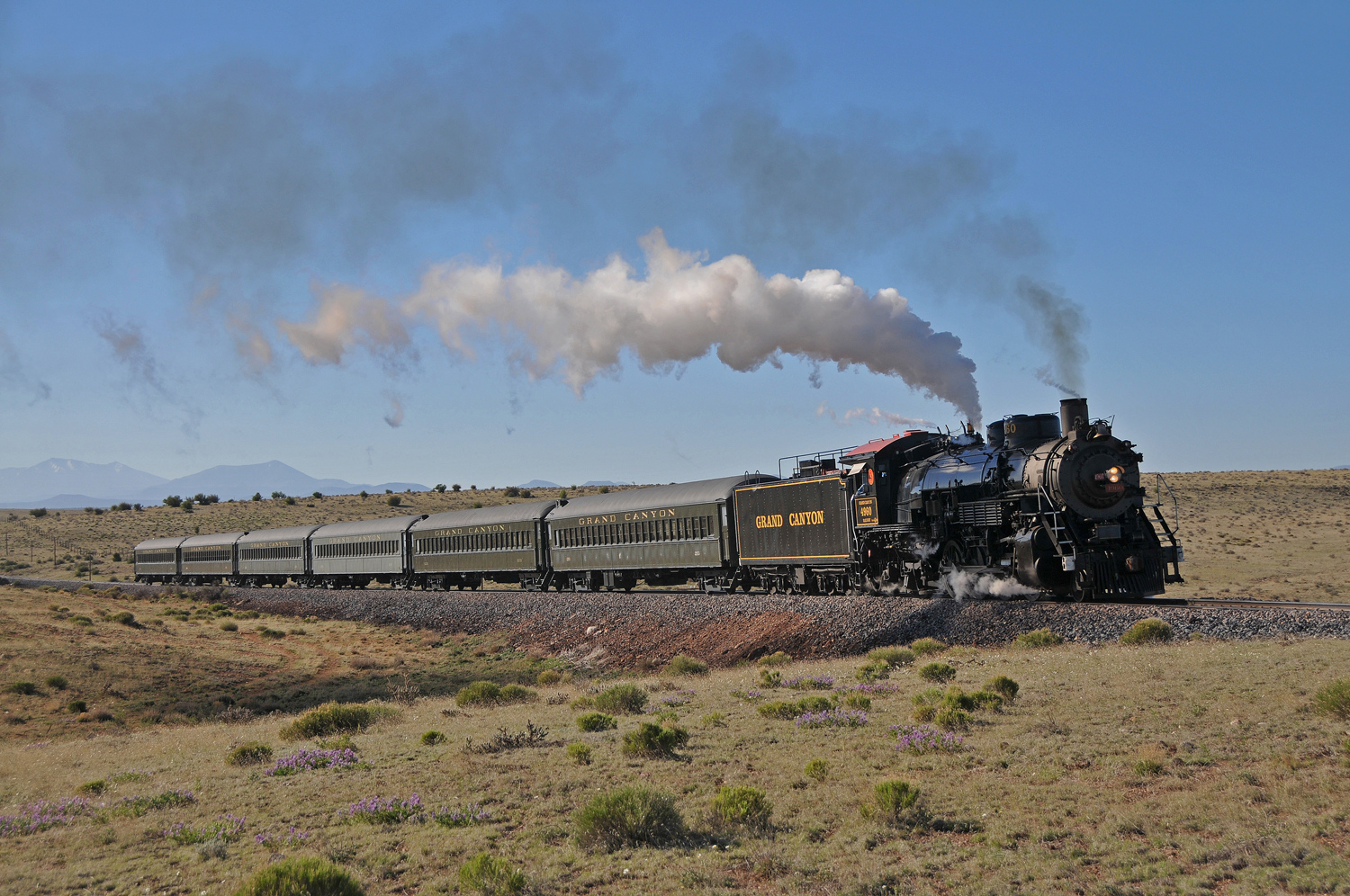North Carolina Scenic Train Rides (2025): A Complete Guide
Published: February 25, 2025
By: Adam Burns
North Carolina scenic train rides have a lot to offer even though the state is not traditionally known for such attractions. Two of the country's more well-known operations are located there, the Great Smoky Mountains Railroad at Bryson City and Tweetsie Railroad in Blowing Rock.
Their success can be largely attributed to two things; the beautiful and majestic Smoky Mountains, a region which enjoys more than 10 million visitors annually, and steam locomotives.
Both railroads utilize such and they always draw large crowds. In addition, don't miss the North Carolina Transportation Museum in Spencer (which occasionally operates Bonsal Sand 0-6-0T #7 and displays several other steamers) and the New Hope Valley Railway at Bonsal (about 25 miles southwest of Raleigh). Finally, catch a trolley ride at Charlotte Trolley, which operates historic equipment for visitors and tourists (you can also ride the city's new "Lynx" light rail transit system).
 Great Smoky Mountains Railroad 2-8-0 #1702 leads an excursion over the Fontana Lake Bridge along the Southern's former Murphy Branch on June 7, 1992. Jim Wrinn photo.
Great Smoky Mountains Railroad 2-8-0 #1702 leads an excursion over the Fontana Lake Bridge along the Southern's former Murphy Branch on June 7, 1992. Jim Wrinn photo.State Rail History
North Carolina's railroad heritage begins in 1834 when the Wilmington & Raleigh Railroad (W&R;) was chartered by Wilmington's business elite to connect its namesake cities.
The year began with apprehension and disappointment when the state legislature declined a bond for the project in January. However, after promoters dropped this provision and instead moved towards a charter, the state gave the go-ahead.
Another issue cropped up when the citizens of Raleigh did not want the railroad accessing their town. To rectify this, officials decided to bypass the capital and reach Weldon where an interchange could be established with the Richmond & Petersburg. Construction of the W&R; began in October, 1836 and was completed only a few years later on March 7, 1840.
At a distance of 161.5 miles, it was then the world's longest railroad, even eclipsing the South Carolina Canal & Rail Road which had opened a 136-mile corridor between Charleston and Hamburg, South Carolina (directly across the Savannah River from Augusta) in October, 1833. In 1855 the W&R;'s name was changed to the Wilmington & Weldon (W&W;) to more accurately reflect the railroad's termini.
The W&W would go on to join the Atlantic Coast Line Railroad, formed in 1900 through the merger of several smaller systems. There were five primary components of the original ACL.
Its earliest predecessor was the Petersburg Railroad, chartered in 1830. It opened for service a few years later between its home city and Garysburg, North Carolina, just across the Roanoke River from Weldon. At Petersburg, a connection was established with the Richmond & Petersburg, completed between its namesake cities in 1838.
Together, the two roads provided a direct route from Richmond to the Tarheel State. As the 1840s dawned more connections from the south extended through service into South Carolina and beyond, such as the previously mentioned Wilmington & Weldon.
During the industry's heyday, North Carolina boasted a wide range of railroading, from local short lines to coal trains in the western mountains (notably the Clinchfield Railroad). In addition, coastal operations could be found on the original Norfolk Southern at Elizabeth City and the ACL serving Wilmington.
While all of the state's railroad attractions are worth the visit, the Great Smoky Mountains Railroad is a must see. It not only offers great scenery but guests also have the option of several different excursion packages, all in climate-controlled cars.
 Freshly restored Norfolk & Western 4-8-4 #611 departs the North Carolina Transportation Museum in Spencer during May of 2015. Dan Robie photo.
Freshly restored Norfolk & Western 4-8-4 #611 departs the North Carolina Transportation Museum in Spencer during May of 2015. Dan Robie photo.Charlotte Trolley
One of the more unique scenic train rides in North Carolina can be found at the Charlotte Trolley which tells the history of Charlotte's former interurban operations. The trolley operates on the weekend, Saturday and Sunday, and current has two cars operational.
Cherryville Model Railroad Club/Museum
This small organization is based inside Cherryville's restored Seaboard Air Line brick depot (completed in 1921). There is no cost to view their layouts although they do accept donations. The club normally operates on select days of the week.
Great Smoky Mountains Railroad
Without question, the most popular of all North Carolina train rides can be found at the Great Smoky Mountain Railroad in Bryson City.
This attraction has been in operation since 1988 using tracks once owned by the venerable Southern Railway, which the company called its Murphy Branch. Train rides are hosted throughout much of the year although they also offer special events, such as "Thomas The Train" and holiday festivities.
National Railroad Museum And Hall Of Fame
This small museum is located at Hamlet inside the Seaboard Air Line's beautifully restored depot which opened in 1900. It has been open since 1976 and tells the local railroad history via numerous exhibits, displays, and various other artifacts. The facility is normally open each weekend.
New Hope Valley Railway
The New Hope Valley Railway, based in New Hill, hosts North Carolina train rides on trackage originally built by the New Hope Valley Railroad, which later part of the Seaboard Air Line system. They currently have a multitude of various diesel locomotive switchers they use to power their trains along with one operable 0-4-0T steam locomotive.
North Carolina Transportation Museum
The one place in the Tarheel State where both scenic train rides and a fabulous collection of preserved equipment can be experienced is at the North Carolina Transportation Museum. It is located in Spencer, situated on the former Southern Railway’s largest steam locomotive repair shops.
Today the museum sees tens of thousands annually and is housed in three of the former shop buildings (currently); the Bob Julian Roundhouse, the Flue Shop, and the Master Mechanics Shop.
As part of the museum they operate excursion trains on the museum grounds and is one of just two locations in the United States to feature the live steam locomotive version of Thomas the tank engine.
 Amtrak's "Exhibit Train" is seen here on display at the North Carolina Transportation Museum in the spring of 2012. Dan Robie photo.
Amtrak's "Exhibit Train" is seen here on display at the North Carolina Transportation Museum in the spring of 2012. Dan Robie photo.Old Rock School Railway Museum
This museum is located in Valdese and operated by the Piedmont & Western Railroad Club. They offer tours during the weekend of their extensive model layouts, by appointment only.
Piedmont Railroad Museum & Library, Inc.
This relatively recent organization was formed in 2017 to preserve the rail history of central and eastern North Carolina. While the state was served by big names in this region such as the Southern, Atlantic Coast Line, and Seaboard Air Line there were also several mid-sized systems or short lines located there; names like the Norfolk Southern, Carolina & Northwestern, Atlantic & East Carolina Railway, Durham & Southern, and Piedmont & Northern.
The group has plans to feature a museum and library named the Piedmont Model Railroad Park which will be open to the public. For the time being you can visit their hobby shop called the Piedmont Model Railroad Park Store at the Cary Towne Center.
Smoky Mountain Trains
This small organization is located in Bryson City in the western part of the state, which is also home to the Great Smoky Mountains Railroad. The museum features an impressive collection of Lionel model trains and is open during select days of each week.
Tweetsie Railroad
The Tweetsie Railroad, based in Blowing Rock, North Carolina has been operating since 1957 and utilizes a section of the historic East Tennessee & Western North Carolina Railroad (nicknamed the "Tweetsie," this classic narrow-gauge system once served both its namesake states).
If there are two North Carolina scenic train rides you should experience it is the Tweetsie and Great Smoky Mountains Railroad. Today, they use 3 miles of track to host trips, most often employing their, 4-6-0 "Ten wheeler", #12, to pull excursions.
Wilmington Railroad Museum
The Wilmington Railroad Museum is located in the port of Wilmington near the coast. It first began in 1979 and in 1983 acquired the former Atlantic Coast Line freight depot, in which the organization is still housed today. They have several artifacts on-hand, a model train layout, as well as a small collection of rolling stock (this includes Atlantic Coast Line 4-6-0 #250 built by Baldwin in 1910).
Recent Articles
-
Florida Railroad Museums: A Complete Guide
Apr 17, 25 04:48 PM
Florida is home to many railroad museums preserving the state's rail heritage, including an organization detailing the great Overseas Railroad. -
Delaware Railroad Museums: A Complete Guide
Apr 17, 25 04:23 PM
Delaware may rank 49th in state size but has a long history with trains. Today, a few museums dot the region. -
Arizona Railroad Museums: A Complete Guide
Apr 16, 25 01:17 PM
Learn about Arizona's rich history with railroads at one of several museums scattered throughout the state. More information about these organizations may be found here.
